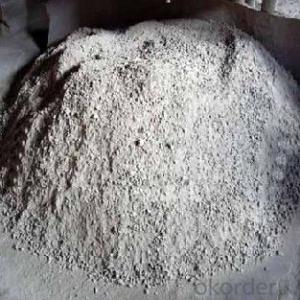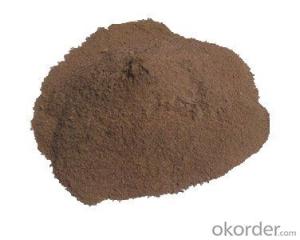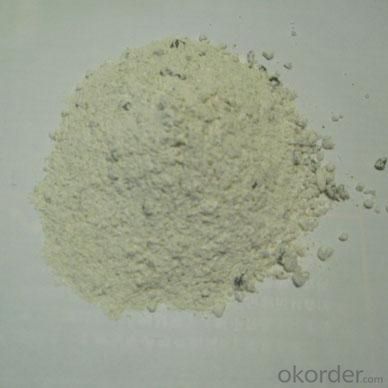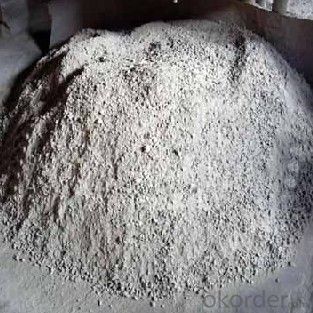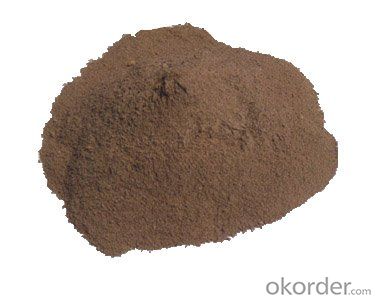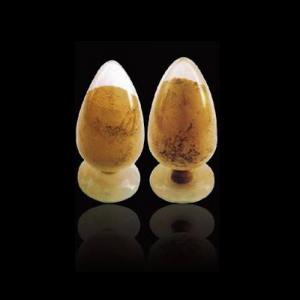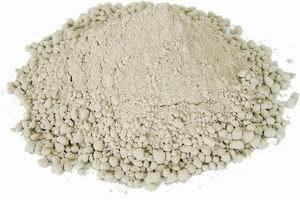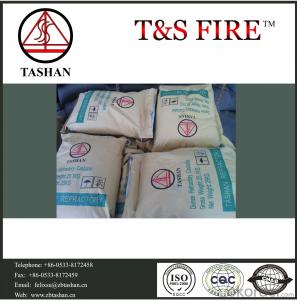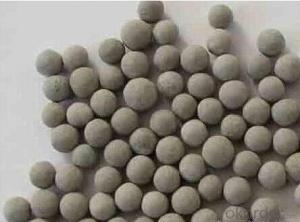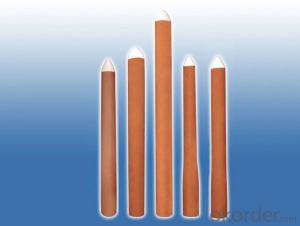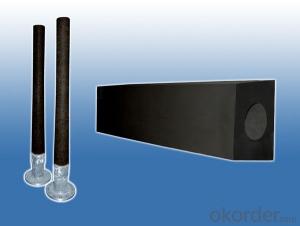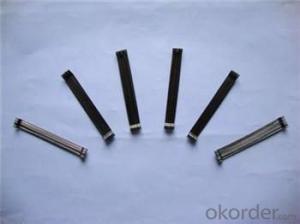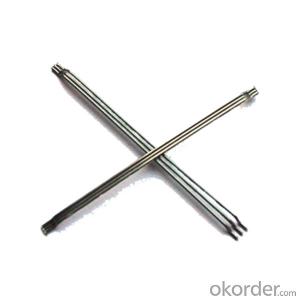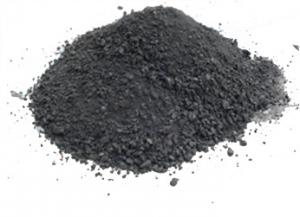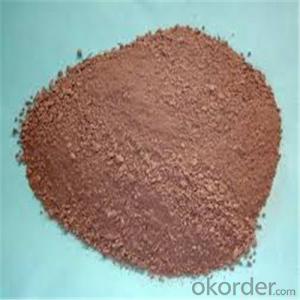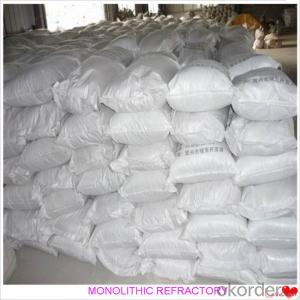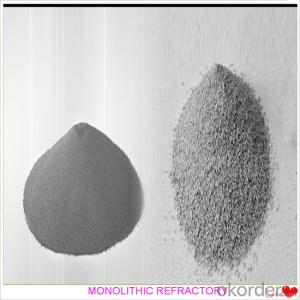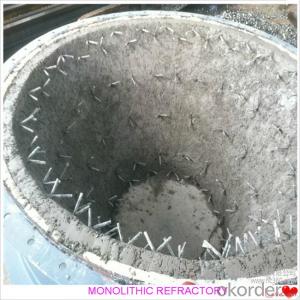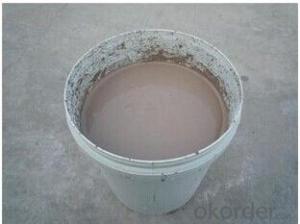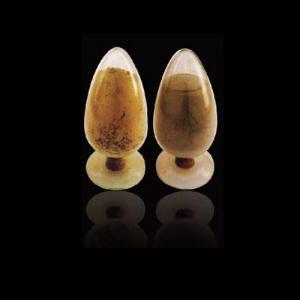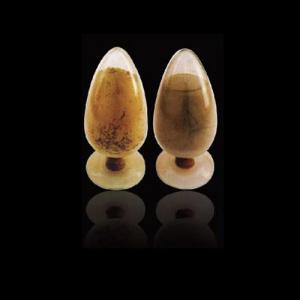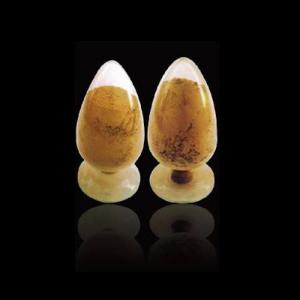Monolithic Refractories for Iron and Steel Industry - Acid Ramming Mass for Induction Furnace Lining
- Loading Port:
- Qingdao
- Payment Terms:
- TT or LC
- Min Order Qty:
- 1 m.t
- Supply Capability:
- 50000 m.t/month
OKorder Service Pledge
OKorder Financial Service
You Might Also Like
Acid Ramming Mass for Induction Furnace Lining
Product Description:
To ensure the quality of our raw materials, we only purchase our raw materials from our long-term trusted suppliers. With every purchase, our quality control staff performs the first inspection at our supplier’s site. Once the raw materials arrive at our facility, our quality control team performs a second inspection on the batch. Each time raw materials enter our facility, they are inspected again prior to being accepted.
Process Quality Control:
From raw material to final product, our process control inspectors ensure that our procedures are consistently and correctly applied each step of the way. In addition to rigorous process control, our quality control team inspects the output of each process to ensure material quality and consistency. In each of our workshops, our employees understand that the output of their workshop is the input for the next manufacturing department. Therefore they have been trained to always carefully inspect the previous workshop’s work and be responsible for their own output
Product Advantages:
• Strong penetration resistance to molten steel
• Corrosion resistance, easy sintering,
• High packing density
• Professional technical staff track the progress of each project, provide construction instruction and after-sales services
• Provide personalized products, including design and production of the completed series of refractories
• Testing, inspection services
• Product consultation
Product Specifications:

Product Images:
FAQ:
Q1: Why buy Materials & Equipment from OKorder.com?
A1: All products offered by OKorder.com are carefully selected from China's most reliable manufacturing enterprises. Through its ISO certifications, OKorder.com adheres to the highest standards and a commitment to supply chain safety and customer satisfaction.
Q2: How do we guarantee the quality of our products?
A2: We have established an advanced quality management system which conducts strict quality tests at every step, from raw materials to the final product. At the same time, we provide extensive follow-up service assurances as required.
Q3: What are Abrasion Resistant Coatings?
A3: ARC's abrasion resistant coatings guard against the severe wear and erosion that can chip away your plant's bottom line. These high-performance coatings protect new equipment as well as rebuild worn equipment at a fraction of traditional replacement costs.
- Q: How do monolithic refractories help in enhancing the durability of iron and steel furnaces?
- The durability of iron and steel furnaces is greatly improved by the use of monolithic refractories, which possess unique properties and characteristics. These materials are specifically designed to endure harsh conditions and extremely high temperatures, making them the ideal choice for lining furnaces. To begin with, monolithic refractories exhibit exceptional thermal resistance, enabling them to withstand extreme heat without compromising their structural integrity. With iron and steel furnaces operating at temperatures exceeding 2,000 degrees Celsius, traditional bricks or other materials would quickly succumb to such intense heat, necessitating frequent repairs and maintenance. Conversely, monolithic refractories are capable of enduring these extreme temperatures without deterioration, thereby enhancing the durability of the furnaces. Furthermore, monolithic refractories boast a high resistance to chemical attack. In the production of iron and steel, the materials being processed often contain impurities and aggressive chemicals that can react with the furnace lining, leading to corrosion and erosion over time. However, monolithic refractories possess a remarkable ability to resist chemical attack, ensuring that the lining remains intact and durable even in the presence of corrosive elements. In addition, monolithic refractories exhibit superior mechanical strength and abrasion resistance. The movement of raw materials, stirring of molten metal, and tapping of the furnace exert mechanical stress and cause abrasion on the lining. Consequently, the lining must withstand this constant wear and tear without cracking or breaking. Monolithic refractories possess exceptional mechanical strength and can resist abrasion, thereby guaranteeing the durability and functionality of the furnace for an extended period. Moreover, monolithic refractories offer outstanding thermal shock resistance. The lining of iron and steel furnaces experiences rapid temperature changes during various stages of production. These temperature fluctuations induce thermal stress and may result in cracks or spalling of the lining. However, monolithic refractories possess low thermal conductivity and can endure thermal shock, effectively preventing any damage to the furnace lining and enhancing its durability. In conclusion, monolithic refractories contribute significantly to the durability of iron and steel furnaces by providing excellent thermal resistance, high resistance to chemical attack, superior mechanical strength and abrasion resistance, as well as exceptional thermal shock resistance. These properties ensure the integrity of the furnace lining, enabling it to withstand extreme temperatures and resist the corrosive and abrasive nature of the materials being processed. Ultimately, this prolongs the lifespan of the furnace and reduces the necessity for frequent repairs or replacements.
- Q: What are the challenges in recycling and disposing of monolithic refractories?
- Recycling and disposing of monolithic refractories pose several challenges that need to be addressed in order to minimize environmental impact and maximize resource efficiency. One of the main challenges is the handling and transportation of monolithic refractories due to their heavy and bulky nature. These materials are often used in high-temperature applications, such as furnace linings, and can be difficult to dismantle and remove from equipment. The weight and size of monolithic refractories make it challenging to transport them to recycling or disposal facilities, requiring specialized equipment and infrastructure. Another challenge is the heterogeneity of monolithic refractories, which often contain various types of refractory materials, binders, and additives. This complexity makes it difficult to separate and categorize different components for effective recycling. The lack of standardized recycling processes for monolithic refractories further complicates the recycling efforts. Furthermore, the high melting points of refractory materials used in monolithic refractories can make it energy-intensive and costly to recycle them through conventional methods like melting and remolding. Alternative recycling methods, such as thermal treatment or chemical processing, need to be explored and optimized to make the recycling process more economically and environmentally viable. Ensuring the proper disposal of monolithic refractories is also a challenge. If these materials are not recycled, they often end up in landfills, taking up valuable space and potentially leaching harmful substances into the environment. Landfilling refractories can also pose a risk of contamination if they are not properly managed or if hazardous additives are present in the materials. To address these challenges, it is crucial to invest in research and development to develop more efficient and cost-effective recycling technologies for monolithic refractories. Collaboration between manufacturers, recycling facilities, and regulatory bodies is also essential to establish guidelines and standards for the recycling and disposal of these materials. Additionally, educating industries and end-users about the importance of recycling and the availability of recycling options can help increase the demand and feasibility of recycling monolithic refractories.
- Q: How do monolithic refractories resist high temperatures?
- Monolithic refractories are designed to resist high temperatures due to their unique composition and structure. These refractories are made from a single piece or material, unlike traditional refractory bricks that are composed of multiple pieces. The main reason why monolithic refractories can resist high temperatures is their high melting point. These refractories are made from materials such as alumina, silica, and magnesia, which have high melting points ranging from 1650°C to 2000°C. This means that they can withstand extreme temperatures without undergoing significant deformation or melting. Furthermore, monolithic refractories possess excellent thermal stability. They have low thermal conductivity, which means they can effectively insulate against heat transfer. This property allows the refractories to maintain their structural integrity even when exposed to rapid temperature changes or thermal shocks. In addition, the monolithic nature of these refractories provides them with enhanced resistance to thermal stress. Unlike traditional refractory bricks, monolithic refractories do not have joints or seams that can be vulnerable to thermal expansion and contraction. This makes them more resistant to cracking or spalling when subjected to high temperatures. Moreover, monolithic refractories can form a protective layer or slag on their surface when exposed to high temperatures. This slag acts as a barrier and prevents direct contact between the refractory material and the hot gases or molten metals, reducing the risk of chemical reactions or corrosion. Overall, the combination of high melting point, thermal stability, resistance to thermal stress, and the ability to form protective slag makes monolithic refractories highly effective in resisting high temperatures. They are widely used in various industries, including steel, cement, glass, and petrochemical, where they are exposed to extreme heat conditions.
- Q: What are the advantages of using plastic refractories in the iron and steel industry?
- There are several advantages of using plastic refractories in the iron and steel industry. Firstly, plastic refractories have excellent thermal shock resistance, which means they can withstand rapid changes in temperature without cracking or breaking. This is crucial in the iron and steel industry where the materials are exposed to extreme heat during the manufacturing process. Secondly, plastic refractories have good workability and can be easily shaped and molded to fit various complex shapes and sizes of furnaces, ladles, and other equipment used in the industry. This makes them highly versatile and adaptable to different production requirements. Additionally, plastic refractories have excellent resistance to chemical attacks from molten metals and slags. They can withstand the corrosive nature of these materials and maintain their structural integrity, ensuring longer service life and reducing maintenance costs. Lastly, plastic refractories have good bonding properties, allowing them to adhere well to existing refractory linings. This helps to extend the lifespan of the overall refractory system and reduce the need for frequent repairs or replacements. Overall, the advantages of using plastic refractories in the iron and steel industry include thermal shock resistance, workability, chemical resistance, and good bonding properties, making them a preferred choice for lining and repairing furnaces and other equipment in this industry.
- Q: How do monolithic refractories contribute to the overall reliability of iron and steel processes?
- Monolithic refractories play a crucial role in enhancing the overall reliability of iron and steel processes in several ways. Firstly, they provide excellent thermal insulation, which helps in maintaining consistent and controlled temperatures within the furnaces and other equipment involved in the production process. This ensures the stability of the process and avoids any sudden temperature fluctuations that could lead to equipment failure or product quality issues. Secondly, monolithic refractories offer high resistance to thermal shocks and mechanical stresses, which are common in iron and steelmaking operations. These refractories can withstand extreme temperatures, rapid heating and cooling cycles, and the corrosive nature of molten metals, thereby prolonging the lifespan of the equipment and reducing the frequency of repairs or replacements. Moreover, monolithic refractories have a superior ability to resist chemical attacks from molten metals, slag, and other harsh substances encountered in iron and steel processes. This resistance prevents the refractories from deteriorating or corroding over time, ensuring their integrity and preventing any contamination of the metal being produced. Lastly, the use of monolithic refractories allows for greater design flexibility and ease of installation compared to traditional brick refractories. This flexibility enables the construction of complex shapes and structures, optimizing the efficiency and productivity of iron and steelmaking processes. Overall, monolithic refractories contribute significantly to the reliability of iron and steel processes by providing excellent thermal insulation, resistance to thermal shocks and chemical attacks, and facilitating flexible design and installation options.
- Q: Can monolithic refractories be used for the lining of blast furnace runners and troughs?
- Yes, blast furnace runners and troughs can have their lining done with monolithic refractories. Monolithic refractories, unlike traditional refractory bricks that are made by assembling individual units, are composed of a single, homogeneous structure. There are several advantages to using monolithic refractories for lining blast furnace runners and troughs. Firstly, they exhibit excellent thermal shock resistance, which is vital in this application given the extreme temperature fluctuations the lining is exposed to. Additionally, monolithic refractories have a good resistance to chemical attack from the molten metal and slag, which helps prolong the lining's lifespan in the harsh working environment of blast furnaces. Moreover, monolithic refractories can be easily installed in intricate shapes and structures, allowing for greater flexibility in designing the lining of blast furnace runners and troughs. This ease of installation also results in reduced downtime during maintenance and repair, as monolithic refractories can be applied quickly and efficiently. To summarize, monolithic refractories are a suitable option for lining blast furnace runners and troughs due to their thermal shock resistance, chemical resistance, and easy installation. Their use can contribute to improving the longevity and performance of these critical components in blast furnace operations.
- Q: What are the typical compositions of monolithic refractories?
- Monolithic refractories are typically composed of a combination of aggregates, binders, and additives. Aggregates are materials such as alumina, magnesia, or silicon carbide that provide the main refractory properties. The choice of aggregate depends on the desired characteristics of the refractory, such as resistance to high temperatures, thermal shock, or chemical attack. Binders are used to bind the aggregates together and give the refractory its shape and strength. Common binders include clay, calcium aluminate cement, or colloidal silica. The binder also contributes to the overall performance of the refractory, influencing properties such as thermal conductivity and chemical resistance. Additives are often incorporated into the composition to improve specific properties or enhance the processing of the monolithic refractory. These additives can include plasticizers, which improve workability and allow for easier installation, or antioxidants, which can increase the refractory's resistance to oxidation. Overall, the specific composition of a monolithic refractory can vary depending on the intended application and the desired performance characteristics. Different combinations of aggregates, binders, and additives can be tailored to suit specific temperature ranges, chemical environments, or mechanical stresses.
- Q: Can monolithic refractories be used for the lining of reheating furnaces and walking beam furnaces?
- Yes, monolithic refractories can be used for the lining of reheating furnaces and walking beam furnaces. Monolithic refractories are a type of refractory material that is characterized by its ability to be cast or gunned into place, rather than being made up of individual bricks or precast shapes. This makes them highly versatile and adaptable for various furnace applications, including reheating furnaces and walking beam furnaces. Reheating furnaces are used to heat metal products to a specific temperature before further processing, such as rolling or forging. The lining of these furnaces is subjected to high temperatures, thermal cycling, and mechanical stress. Monolithic refractories are well-suited for these conditions, as they have excellent thermal shock resistance and can withstand rapid temperature changes without cracking or spalling. Walking beam furnaces are used in the steel industry for the continuous heating and transport of steel slabs or billets. These furnaces require a lining material that can withstand the abrasion and mechanical stress caused by the movement of the material. Monolithic refractories with high abrasion resistance and good mechanical strength are ideal for the lining of walking beam furnaces. Additionally, monolithic refractories offer other advantages such as easy installation, reduced downtime for repairs, and improved energy efficiency. They can be tailored to specific furnace designs and can be easily repaired or replaced when necessary. In conclusion, monolithic refractories are a suitable choice for the lining of reheating furnaces and walking beam furnaces due to their ability to withstand high temperatures, thermal cycling, mechanical stress, and abrasion. Their versatility, ease of installation, and repair make them a preferred option for these furnace applications.
- Q: What are the specific requirements of monolithic refractories for ladle transfer applications?
- Monolithic refractories used in ladle transfer applications have specific requirements to ensure their effectiveness and durability. These requirements are essential for maintaining the integrity of the ladle lining and preventing any issues during the transfer process. Firstly, monolithic refractories for ladle transfer applications must have excellent thermal shock resistance. Ladles are subjected to extreme temperature changes during the transfer process, and the refractories must be able to withstand rapid heating and cooling without cracking or spalling. This property helps to prevent any damage to the lining and maintains the structural integrity of the ladle. Secondly, ladle transfer applications require monolithic refractories with high resistance to chemical attack. Ladles often come into contact with various molten metals and slag, which can have corrosive properties. The refractories must be able to withstand these corrosive environments and maintain their physical and chemical properties over time. Another important requirement is good mechanical strength. Ladles can experience significant mechanical stress during the transfer process, including impacts and vibrations. Therefore, the monolithic refractories need to have sufficient strength to resist these mechanical forces and prevent any cracking or failure in the lining. Furthermore, ladle transfer applications often involve the use of fluxes and additives, which can have different physical properties. The refractories used must have compatibility with these fluxes and additives to ensure proper performance and avoid any adverse reactions that could affect the ladle's lining. Lastly, monolithic refractories for ladle transfer applications should have low porosity. Low porosity helps to minimize the penetration of molten metal and slag into the refractory lining, reducing the risk of erosion and extending the service life of the refractories. In summary, the specific requirements of monolithic refractories for ladle transfer applications include excellent thermal shock resistance, high resistance to chemical attack, good mechanical strength, compatibility with fluxes and additives, and low porosity. By meeting these requirements, the refractories can effectively withstand the harsh conditions of ladle transfer and ensure the longevity and performance of the ladle lining.
- Q: How do monolithic refractories withstand the thermal cycling in aluminum smelting applications?
- Monolithic refractories have been specifically developed to endure the extreme thermal cycling conditions that arise in aluminum smelting applications. The exceptional properties of these refractories enable them to withstand the rapid and repetitive heating and cooling cycles without experiencing significant damage or failure. A key characteristic of monolithic refractories is their remarkable thermal shock resistance, which allows them to withstand sudden temperature changes without cracking or spalling. Throughout the aluminum smelting process, the refractories are exposed to extreme temperatures when molten aluminum is poured into the molds or when the molten metal comes into contact with the refractory lining. It is essential for the refractories to quickly absorb and dissipate heat to prevent any thermal shock damage. Furthermore, monolithic refractories possess a high thermal conductivity, which facilitates the efficient transfer of heat away from the refractory lining. This effectively reduces the risk of thermal stress and thermal fatigue. By dispersing the heat generated during the smelting process, the refractories minimize temperature variations within the lining, thereby preventing the occurrence of cracks or fractures. Moreover, monolithic refractories exhibit excellent chemical resistance, a crucial characteristic in aluminum smelting applications. These refractories are formulated to resist the corrosive effects of molten aluminum and other chemicals present in the smelting process. By offering resistance to chemical corrosion, the refractories help maintain the integrity of the refractory lining and extend its service life. Additionally, monolithic refractories are often reinforced with fibers or other structural materials to enhance their mechanical strength and durability. These reinforcements provide added resistance against mechanical stresses, such as thermal expansion and contraction, which arise during the thermal cycling process. In conclusion, the purpose of monolithic refractories is to withstand the thermal cycling conditions encountered in aluminum smelting applications. Their exceptional thermal shock resistance, high thermal conductivity, excellent chemical resistance, and enhanced mechanical strength enable them to endure extreme temperature fluctuations without experiencing significant damage. These refractories play a crucial role in maintaining the integrity and efficiency of the smelting process in the aluminum industry.
Send your message to us
Monolithic Refractories for Iron and Steel Industry - Acid Ramming Mass for Induction Furnace Lining
- Loading Port:
- Qingdao
- Payment Terms:
- TT or LC
- Min Order Qty:
- 1 m.t
- Supply Capability:
- 50000 m.t/month
OKorder Service Pledge
OKorder Financial Service
Similar products
Hot products
Hot Searches
Related keywords

